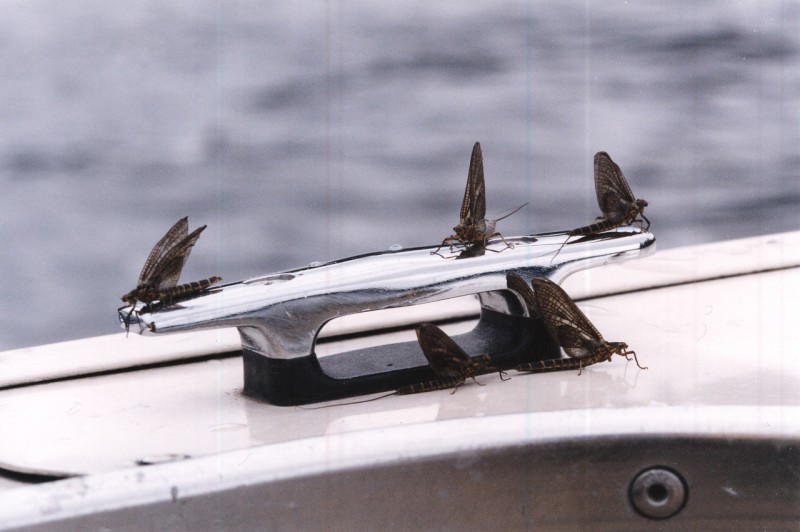Fishing picked up during the first two weeks of July around Petches, Bear Island, Idiot Point and The Outlet. The Outlet deserves honourable mention, because unlike over the past few years of landed fish, this year has produced several brookies weighing three pounds or more worthy of entering in the daily entry log book. Lee Wulff in 1969 along with friends saw a few dimples and swirls in the Outlet after landing his floatplane and went on to hook a few nice Brookies in that area. So is it safe to assume that the Outlet is returning to the glory of yesteryear? We can only speculate.
The weather has been anything but normal, so maybe the poor weather (windy at that) means we can abide by the seagull’s weather lore:“seagull, seagull sit on sand, it’s never good weather on land.” This bad weather has more or less acted as a silver lining for our success rate at Anne Marie, as well as Minonipi where a long-time angler, Duncan Lewis landed an 8-pound Char, one of Minipi’s rare species, under less than perfect conditions. Perhaps a sign of things to come. As well, the massive hatches and spinner falls at Minonipi were such that fish were probably feeding on emergers because of the scarcity of boils. Casting to a targeted fish was next to impossible because of the smorgasbord of available food surrounded by the artificial fly.
 As mentioned, the silver lining of wet weather prevented mayfly duns from getting airborne sooner, as opposed to a sunny day which would see mere minutes for the mayflies’ wings to dry. The vulnerability of those duns at that time would enable fishermen to take advantage of the dun stage with the nymph-stage life cycle already existing as an insects’ vulnerability.
As mentioned, the silver lining of wet weather prevented mayfly duns from getting airborne sooner, as opposed to a sunny day which would see mere minutes for the mayflies’ wings to dry. The vulnerability of those duns at that time would enable fishermen to take advantage of the dun stage with the nymph-stage life cycle already existing as an insects’ vulnerability.
A tagged fish at Loon Pond in 2009 that weighed 4.75 pound was recaptured at The Narrows recently weighing some 6.25 pounds. Water temperature taken around Loon Island of 15 degrees Celsius or 59 degrees Fahrenheit is a an ideal temperature for Brook trout. Air temperatures hovering much lower often forced people to put on extra layers, a small price to pay however for great fishing.
Flyouts to Minipi, especially First Narrows and Little Minipi proved to be successful this July. 
Until next month, tight lines.

